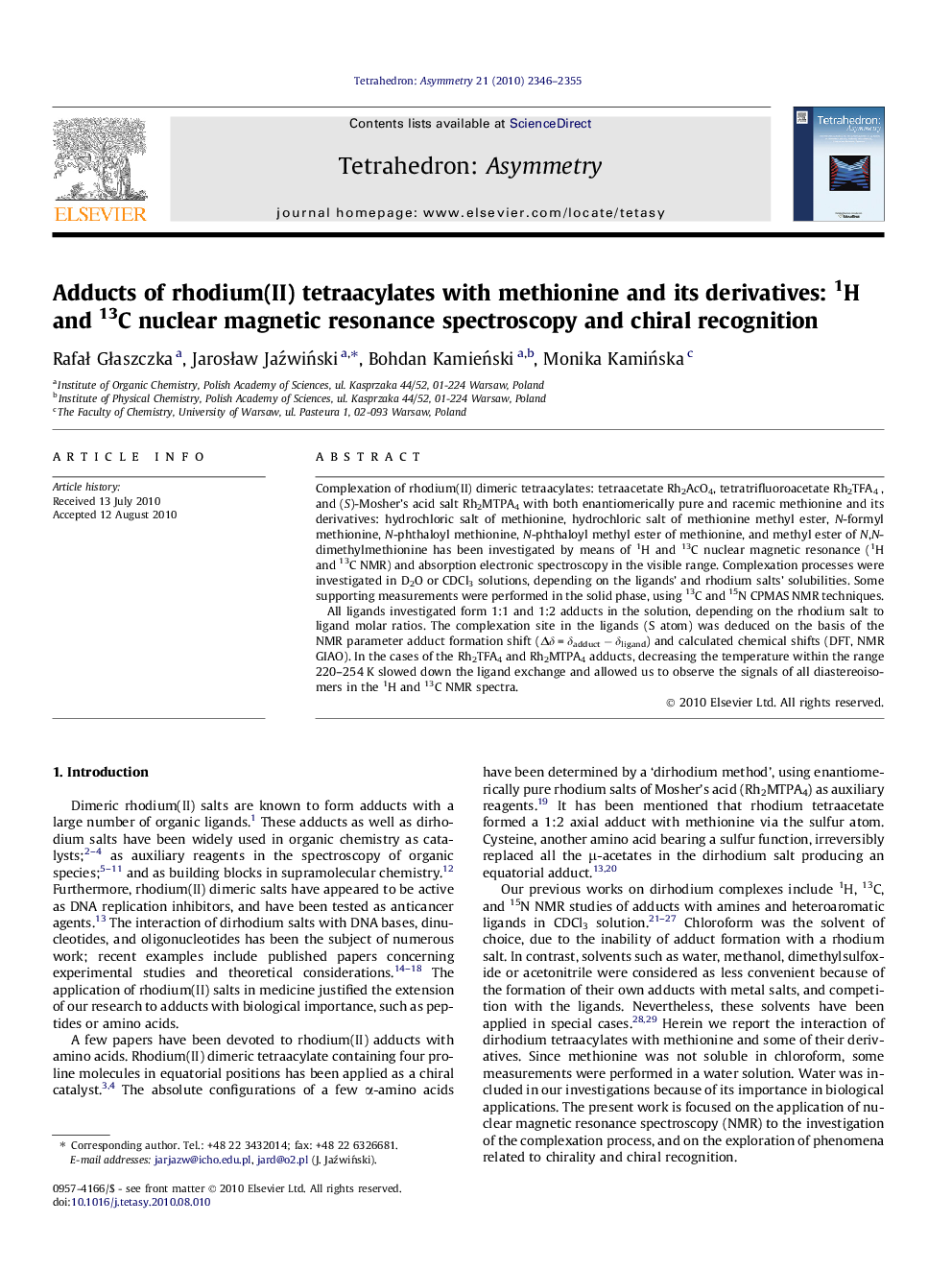| کد مقاله | کد نشریه | سال انتشار | مقاله انگلیسی | نسخه تمام متن |
|---|---|---|---|---|
| 1348721 | 980368 | 2010 | 10 صفحه PDF | دانلود رایگان |

Complexation of rhodium(II) dimeric tetraacylates: tetraacetate Rh2AcO4, tetratrifluoroacetate Rh2TFA4 , and (S)-Mosher’s acid salt Rh2MTPA4 with both enantiomerically pure and racemic methionine and its derivatives: hydrochloric salt of methionine, hydrochloric salt of methionine methyl ester, N-formyl methionine, N-phthaloyl methionine, N-phthaloyl methyl ester of methionine, and methyl ester of N,N-dimethylmethionine has been investigated by means of 1H and 13C nuclear magnetic resonance (1H and 13C NMR) and absorption electronic spectroscopy in the visible range. Complexation processes were investigated in D2O or CDCl3 solutions, depending on the ligands’ and rhodium salts’ solubilities. Some supporting measurements were performed in the solid phase, using 13C and 15N CPMAS NMR techniques.All ligands investigated form 1:1 and 1:2 adducts in the solution, depending on the rhodium salt to ligand molar ratios. The complexation site in the ligands (S atom) was deduced on the basis of the NMR parameter adduct formation shift (Δδ = δadduct − δligand) and calculated chemical shifts (DFT, NMR GIAO). In the cases of the Rh2TFA4 and Rh2MTPA4 adducts, decreasing the temperature within the range 220–254 K slowed down the ligand exchange and allowed us to observe the signals of all diastereoisomers in the 1H and 13C NMR spectra.
Adduct formation between rhodium(II) tetraacylates and methionine and its derivatives in D2O and CDCl3, solutions was investigated by means of 1H and 13C NMR spectroscopy. The phenomena related to NMR chiral recognition were explored.Figure optionsDownload as PowerPoint slide
Journal: Tetrahedron: Asymmetry - Volume 21, Issue 19, 7 October 2010, Pages 2346–2355